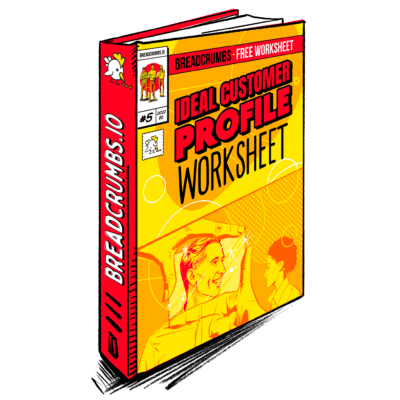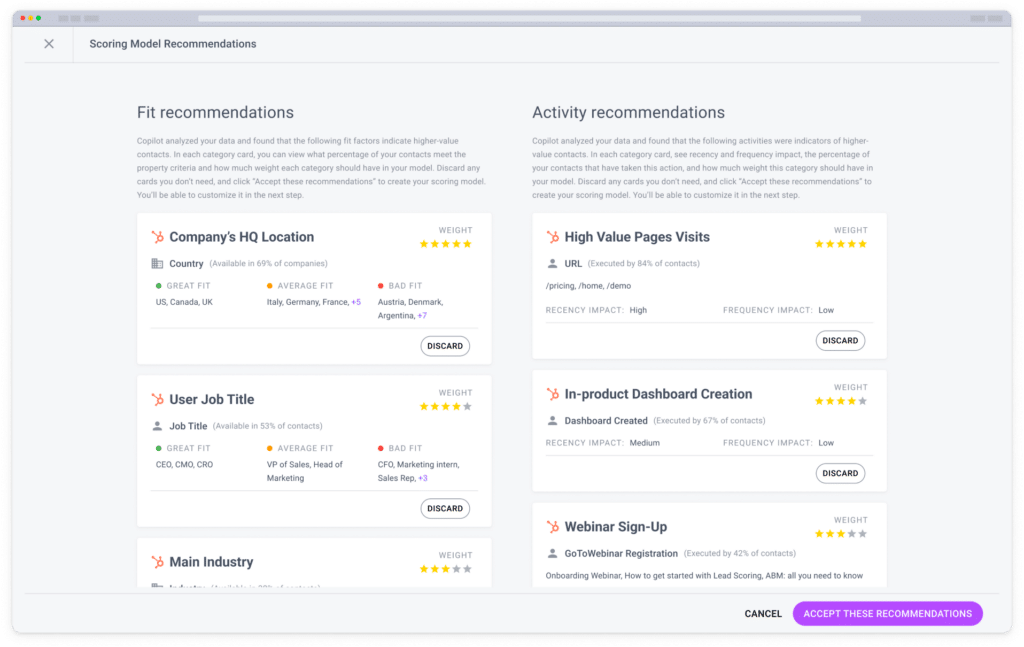So, you’ve got a product. Now, what?
You need a strategy— a product strategy. You must define your unique value proposition. What makes your product great? How does it stand out from the competition?
You also need to know your target audience. Who will be using your product?
Then, figure out how your product will support your organization’s goals. That’s the gist of a product strategy.
But it’s missing something— user emotion. A winning product strategy can leverage the emotional drivers influencing buyer behavior, preferences, and decisions.
What is a Product Strategy?
A product strategy is a marketing and sales plan that outlines your product’s goals, how it will achieve those goals, and why it will succeed.
A well-defined product strategy should:
- Clearly outline the purpose behind your product and how you envision people using your product.
- Include data and insights you can use to make decisions.
- Highlight potential challenges you’ll face that may hinder product development.
- Outline how you’ll carry out your strategy.
- Define the key success metrics to measure performance.
Why is Product Strategy Important?
Anyone can create a product. But not everyone can build a product that solves real problems and meets business goals.
Surprisingly, 25.3% of product managers admit that their company’s strategy isn’t clear. And out of all the products that hit the market, only 40% of them survived.
This is where a product strategy comes into play. It helps you map out your goals and approach for how your product will achieve success in the market.
This helps you:
- Maintain focus and goal alignment: By keeping your eyes on the mission, you’ll make product decisions that align with your overall goals and objectives.
- Make smarter decisions: Product strategy is a roadmap for decision-making throughout the product lifecycle. That means you’ll have a framework for evaluating opportunities, prioritizing features, allocating resources, and making trade-offs to maximize the impact and value of your product.
- Mitigate risks: Through market research, validation, and iteration, you can increase your chances of success in the market.
- Differentiate your product in the market: Creating a product strategy can help you identify unique value propositions and competitive advantages. That way, you can carve out a distinct market position and attract customers.
- Enhance customer satisfaction: With a well-executed product strategy, you can create a product that better meets the needs and expectations of customers.
- Drive long-term value creation: Delivering a product and experiences that meet customer needs and drive business results allows you to achieve long-term success in the market.
- Improve resource efficiency: In 2022, organizations wasted 12% of their resources due to ineffective project management. With clear direction and priorities, you can optimize the way you allocate your resources. That means you won’t have to spend time, money, and effort on strategies that aren’t effective. As a result, you can focus on high-impact initiatives that deliver the most value to customers and your business.
Winning Combination: Product Strategy, RevOps, and Lead Scoring
Product strategy works well alongside RevOps and lead scoring.
Let’s look at how all three work together to drive success and achieve a competitive advantage.
- Product strategy lays the foundation for revenue growth and customer acquisition. It guides product development, pricing, positioning, and go-to-market (GTM) strategy.
- RevOps aligns sales, marketing, and customer success teams. They all engage in activities that optimize revenue generation and enhance customer lifetime value (CLV).
- Lead scoring prioritizes leads and qualifies leads based on their likelihood to convert into customers.
When you combine each of these strategies, you can align all departments toward common goals and objectives, make more informed decisions about product development, and optimize revenue growth.
Case Study
By aligning its sales and marketing team and using Breadcrumbs, a lead scoring tool, Thinkific doubled its marketing qualified leads to opportunity (MQL to OPP) rate in three months.
Using Breadcrumbs, the company ran a Reveal analysis of its HubSpot account. This helped the marketing and sales team better understand their engagement data. As a result, they uncovered events that happened most frequently and that had a positive impact on revenue.
With the insights they gained, they were able to create a lead scoring model by choosing the category that had the highest revenue impact.
They scored leads based on fit (e.g., job title, industry) and engagement (e.g., website visits, page views, and time spent on page) categories.
Thinkific was able to focus more on leads that were likely to convert and create more opportunities for the sales team. This resulted in a significant improvement in MQL to OPP rate, with 2x an improvement in just three months.
Adding User Emotion
As you can see, a lead scoring tool can help you track the actions and behaviors of leads to help determine their likelihood of converting.
From there, you can get a better idea of your target audience’s pain points. When you identify certain patterns and trends in their behavior, you can get insights into the topics, issues, or solutions that resonate most with them.
This will allow you to tap into their emotions.
Creating engagement and resonance
Incorporating emotion into your product strategy—from customer data— can help you improve results and increase customer engagement and resonance.
Delta Remedys, a company in the health and wellness sector, provides an example of how user emotions can be incorporated into product strategy.
On their HHC gummies product page, they offer extensive information about the product, addressing the customer’s need for reassurance. This includes an explanation of what HHC is, how it was discovered, and how it’s produced.
Further, they highlight that its gummies are tested in a third-party lab. This means that an unbiased lab—not the company’s own lab—certifies that the final product complies with specific standards for safety, quality, and performance.
Delta Remedys’ product strategy appeals to its target audience’s emotions by reassuring them that its stress relief gummies are safe and effective.
Building Your Product Strategy
Here’s a quick step-by-step overview of how to build a winning product strategy.
Understand your user
21% of products fail to satisfy buyers. And 1 in 5 product marketers have never communicated with their prospects or target audience.
So, the first and most important step in a product market strategy is to understand your users.
Who do you envision using your product? What are their pain points? What are their motivations and goals? What do they hope to achieve after using your product?
This is where you’ll begin to research their demographics, values, beliefs, and pain points. Create an ideal customer profile (ICP). Additionally, using an AI headshot generator can help visualize your target audience and make your ICP more relatable and realistic.

Ebook
Ideal Customer Profile (ICP) Worksheet
Learn how to create an Ideal Customer Profile and build a successful sales strategy with this Ideal Customer Profile (ICP) Worksheet.
Here’s what should be included:
- Demographic information
- Psychographic attributes
- Buying behaviors
- Pain points
Use heatmap tools like Glassbox or Hotjar to see how users interact with your website. You’ll get insights into their clicking, scrolling, and browsing behaviors. You’ll also get to see which parts of your website they’re spending the most time on.
Use a survey tool to gather feedback data. You can identify any themes, trends, and sentiments that your users express regarding their experiences and pain points.
Starting completely from scratch?
Here’s what you can do:
- Conduct a competitor analysis to understand how users interact with existing solutions similar to yours.
- Create surveys or host focus group sessions to gather feedback about your target audience’s needs and preferences.
- Develop prototypes or mockups of your products to conduct user testing sessions.
- Monitor social media platforms, forums, and online communities related to your industry or target audience.
Truly understanding how users feel about your product is key, and that’s where customer data platforms (CDPs) can be a powerful tool. AI data analysis can simplify this by interpreting feedback from surveys, app usage, and support interactions. This insight is crucial for creating a product strategy that truly connects with users.
CDPs collect first-party data on user sentiment towards specific features or aspects of a product or service by consolidating data from various sources, including surveys, app usage, and customer support interactions. This emotional data is invaluable for crafting a product strategy that resonates with users on a deeper level.
Leverage customer behavior data
Customer data provides invaluable insights into your customer’s needs, wants, pain points, and purchasing behavior.
Track different product metrics, such as user engagement, retention rate, churn rate, and conversion rate, to identify what products resonate the most with customers.
Using this information, you can optimize your pricing strategies, product positioning, and marketing campaigns to drive sales and customer loyalty.
Define your market vision
Defining a market vision and creating a high-level plan can help you find the best market fit for your product.
To do this, you must understand your target market, develop a buyer persona, evaluate the competition, determine product positioning, and create a go-to-market (GTM) plan.
Use a tool like Unkover to conduct a competitive analysis. Through its AI-driven platform, Uncover will constantly deliver updates about what’s going on with your competitors, including:
- SEO gaps and opportunities
- New funding rounds
- Customer reviews
- Press mentions
- Page changes
- Email marketing flows
Set clear goals
Set clear goals for your product strategy by writing down specific objectives that focus on outcomes, not outputs.
Incorporate a goal-setting framework like SMART goals.
Here’s an example:
- Specific: Increase product revenue by 25% within the next year by expanding the existing product line to three complementary offerings.
- Measurable: Achieve a customer satisfaction rate of 4.5 out of 5 on product satisfaction surveys within six months by implementing product improvements based on customer feedback.
- Achievable: Launch a new version of your product with enhanced features and functionality within nine months.
- Relevant: Increase market penetration in the education sector by acquiring at least 20 new school district clients within the next year. Be sure to align this with your company’s focus on serving educational institutions.
- Time-bound: Reduce time-to-market for new product releases by 20% within six months by streamlining the product development process.
Describe Product Initiatives
Your product initiatives are complementary to product goals in that they represent the actionable steps and strategies that help you realize the broader vision for the product.
They also help you align teams and understand the product in its entirety.
Examples of product initiatives might include:
- Product education and training
- User onboarding optimization
- Customer feedback loops
- Performance optimization
- Mobile app development
- Integration partnerships
- Feature enhancements
- New market expansion
Final Thoughts
The whole point of a product strategy is to define a clear roadmap for how your product will achieve its goals, differentiate itself in the market, and deliver value to customers.
But none of this can happen without understanding your target audience first. And it all starts with leads. These are people who are just finding out about your business. But they tell you all you need to know about your target customer.
There are many types of leads. But in a nutshell, there are leads who aren’t likely to convert. Then, there are leads who are likely to convert.
You don’t want to waste your time and resources on unqualified leads. Instead, you can use a lead scoring tool to help you identify leads who are most likely to convert into paying customers.
Ready to get started? Schedule a Breadcrumbs demo.







